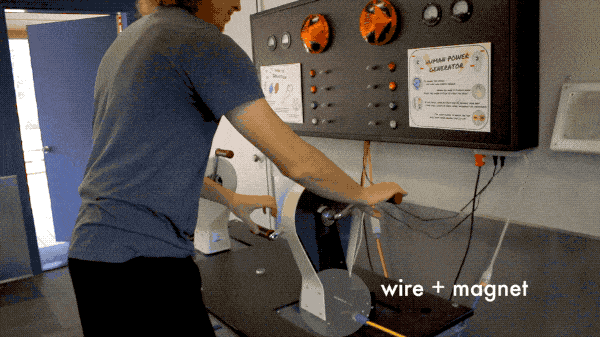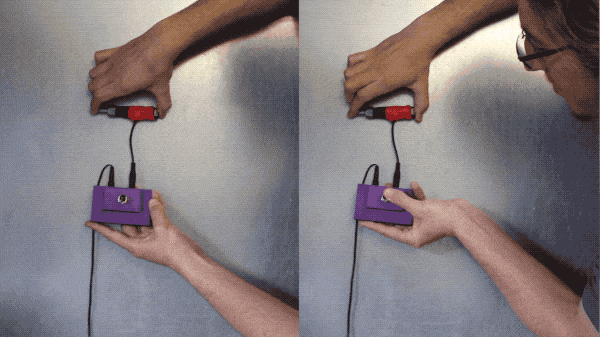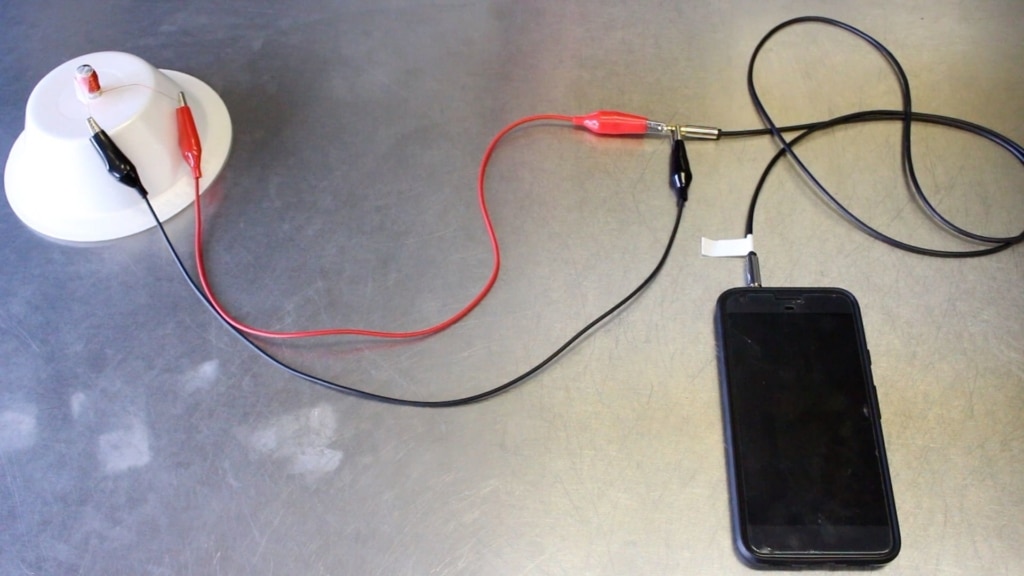
It’s easy to look at a piece of technology (like a speaker) and feel like you’re looking at a black box, wondering how they work. What’s hidden inside them? It must be complicated, right? Often times, that holds some truth. But you would be surprised how far you can get if you can nail down just a key concept or two. To understand how something like a speaker works, the inherent link between electricity and magnetism is one of those concepts.
This link between electricity and magnetism is most often used by creating one from the other. Magnetic fields can create (or induce) electric fields. For example, our hand crank motor moves a wire around a magnet, and this changing magnetic field induces an electric field, which we can use as electricity, to do something like light up a lightbulb. The phenomenon of inducing an electric field from a magnetic field has given a straightforward name of electromagnetic induction.

And, lucky for us, induction goes both ways: electric fields can also induce magnetic fields! We have an electromagnet at camp that turns a screw into a magnet. Around the screw is a coil of wire, and pressing the button allows electric current (from the outlet) to flow through the coils that, and that electric current induces a magnetic field– creating a temporary magnet out of the screw.

Inside a speaker, you’ll also find a type of electromagnet… using coils of wire wrapped around a permanent magnet. Pulses of electricity carry sound information from your phone down through the coils of the electromagnet, rapidly changing the direction of the magnet’s magnetic field back and forth, which creates alternating magnetic forces, and these forces are what moves your speaker cone back and forth, AKA creating sound!
To create your own speaker, you need a 2 to 3 strong magnets, enamel wire (copper wire with a thin insulated coating), and something cone-shaped to funnel the sound. We used a phone to play music, and opted to use an aux cord and alligator clips to connect the copper wire to the headphone jack. Make sure to use the 1st and 3rd section of the aux cord. (You can also sacrifice a headphone jack and wrap the exposed wires around the two ends of the copper wire.) When using the enameled wire, you need to sand the ends of the wires down so that the copper wire is showing. (You won’t get a connection if you don’t). Wrap the wire around the magnet (the more turns, the better the results!) and use another magnet on the other side of your sound funnel/speaker (we used a bowl). This magnet helps the speaker work better, and has the added result of keeping your magnets easily attached to the speaker. When you put these all together, you should have a speaker!
Tip: The speaker works off induction, and the more you have of it, the better results you’ll get. To increase induction, you can increase how many turns and how big the coil of wire is, and you can increase the strength of magnets.

Electricity and magnetism are complicated subjects to study, but you don’t need years of studying to take advantage of it. By knowing the idea of electromagnetic induction, you now know how a simple motor is made, and can make one too [https://astrocampschool.org/homopolar-motorcar/] ! From speakers, to washing machines, to windmills, the power of wires + magnets basically endless, and integral to our way of life! In a world surrounded by motors and electromagnets, you’ll never look at your world the same way.

